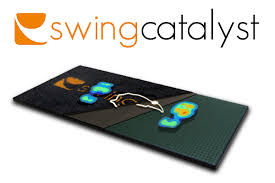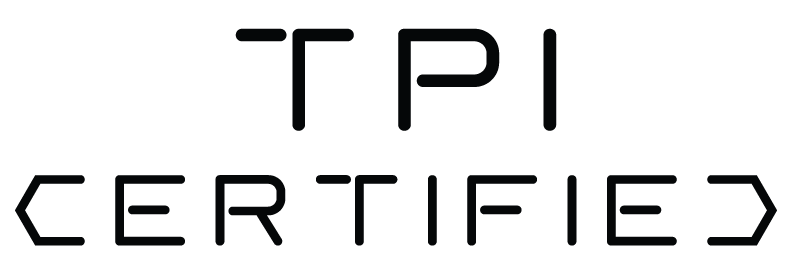4 Ways to Close the Clubface
Keeping the clubface in a square to closed position allows the body to rotate further and faster. As soon as control of the clubface is lost(open) the body will slow down rotation to help give the clubface time to close, otherwise, the ball will slice/block off two streets over. Those who continue to overdo this scenario will fall into the deadly trap of flipping and scooping. How much rotation and clubface closure you have will be a blended matchup based on your body’s capabilities.
Maintaining control of the clubface is imperative to controlling your golf ball.
Do You Get Quick?
Have you ever watched a golf swing and just knew something was wrong but you couldn’t quite figure out what it was? Maybe it just looked ‘quick’ or the backswing looked jerky… most times you can trace these looks or poor rhythm back to incorrect sequencing of the body in the backswing or the transition to downswing.
The classic swing tip from your playing partners is the “you got quick” which seems to be the cure all for any bad shot. So what’s really happening? The great thing about 3D Motion Capture is that we can measure the sequencing of the swing and see that the “quick” look is really just a swing that’s not correctly sequenced. So… what is the correct sequence……………..
Body Vs. The Arms…. in the Backswing
Reversing the roles of the Arms and Hands with the Body in your backswing can cause you to lose control of the club head.
The Pure Roll
Ball alignment is the simplest way to start you way towards becoming a confident putter… yet many people fight using it. Why?
Why You’re Not Getting Better
No one ever swings the club exactly the same, we all have our own pattern of movements. It’s like a window where the center is our best swing and all around that a swings that are very similar yet not the same. You’ve got to take this into account when trying to improve your game!
Golf Pro VS. Body Pro
The Monthly Membership – A results driven process
I want give you a better idea of what to expect from my results based Monthly Membership because it is so different from traditional teaching. It’s not time, like 45 mins, that I’m selling… it’s Results.
- We’re not going to be working on something different every time we get together, but will keep working towards a goal until we get it! The more often I get to spend time helping you practice, the faster you will achieve higher retention rates. You Will get results faster!
- Since we are basing your Goals on how your body moves and how the club is moving, we can set measurable goals and prove results. We can even measure your mental game! Those who are serious about competition will also use PGA Tour level Stat Tracking to set long term high performance goals.
- Everyone’s goals will be different because there is no ONE way to swing the club or play this game. That’s why Jim Furyk is #4 on the All Time Money List! Goals will range from Body Based Swing Mechanics to Club Fitting and Course Management. We can even get into nutrition and sleep habits!
- Golf is Not played on the practice range so we will need to get out on the golf course to learn how to use your new skills!
Halloween Trick Shot – The Double Chip
The Double Chip was made famous by T.C. Chen in the 1985 US Open (https://www.youtube.com/watch?v=76QRludSXgo) which unfortunately gave him the nickname of ‘Two Chip Chen’!
There is nothing more embarrassing than putting all your energy and focus into a chip shot just to double hit it. You’ll see in this video that you can make it look fun, but that’s simply not the case when you do it on accident! So how does it happen?
Speaking strictly of the club head, it must be moving faster than the ball after impact. The conditions that create this almost always come from decelerating the club head just prior to impact which creates slow ball speed off the face. The club head must then accelerate quickly upward into the ball.
Does this happen purely from a mechanical standpoint or are there some brain factors at play here? Most of the time the deceleration of the club can be linked to a fear of poor contact which creates an intention of trying to be careful and thus slowing down. The acceleration can then be attributed to the desire of helping the ball into the air… and we now have a double chip!
One of my favorite drills that can help people become less mechanical and more reactive is the 5 Ball Drill (see the video below). This drill forces the player to swing in rhythm and makes it almost impossible to become consumed with fear of impact and the desire to help the ball. It will allow the stroke to occur with a consistent pace and rhythm. You will be amazed at how great you hit some of these balls!
Get a Grip & Make More Putts
Is there be some part of getting better at this game that is simple? What’s the easiest way to make an impact on our game? It’s easy to find a hundred different was to hold the putter and many people will tell you that there Is a best way, but if you take a look at all the professional tours, you will see that there are many ways to hold the putter that are making millions of dollars.
This fact lends me to believe that the way you grip the putter is more of a preference than a principal to good putting. So if we’re looking for something solid to improve our game we need to find something that they all do… a principal to better putting.
One of the most common things that good putters do is to get the forearms and the putter shaft on the same plane. This can be seen from a ‘down the line’ view of the player if you visualize a line from the elbows to the putter head. We should see both the shaft and forearms on this line. This creates stability in the stroke.
I’ll next ask you to look at the way you practice your putting, even if it’s just hitting a few putts prior to your round. Most people will grab 2-3 balls and roll 15-20′ putts. Based on PGA Tour averages from that length, you will be Missing far more putts than you will make IF you are as good as a PGA Tour player. If you’re not quite up to their level, you will be missing almost all of these putts. Therefore, you are practicing Missing putts! I love to use a drill called 3,5,7 to practice Making putts.
3,5,7 Drill
1. Start by finding a putt that is straight uphill.
2. Go through your Pre Shot Routine with every putt you hit
3. Using only 1 ball, make three 3 footers in a row
a. Then three 5 footers in a row
b. Finish with three 7 footers in a row.
4. If you miss any one putt you must start over at the 3 foot mark.
Here’s my guarantee…. Even if you don’t try to get your forearms and shaft on plane, if you Follow the 3,5,7 drill to a tee every time you go to the course, you’ll be practicing Making putts and… You WILL become a confident putter!
Get Unstable for Better Athleticism
We take our feet for granted. We get lazy and lose ourselves. Walk up and down any range and you will see people who are squatting too much, sitting back on their heels, standing up vertically or bent over too far. All of these people are using their feet to compensate for these poor positions. Since it is such an un-athletic posture, you are going to get one of two outcomes… 1. an Un-athletic swing or 2. You will force yourself to find some athleticism during the swing. This game is hard enough as it is, so why make it even harder on yourself!
Let’s get ready to move by getting into an athletic posture to start. To find this we’re going to take away the stability of your feet by standing on an unstable surface. In the video I’ll us some half foam rollers and a pool noodle, but I’m sure you can find many items in your garage that will provide the same results.
Stand on the object balancing near the middle to balls of your feet and you’ll find that to do so, your body will automatically go into an athletic posture. If you have a mirror nearby, please take a look at yourself to see how great it looks! Now copy this position for all your golf shots!












